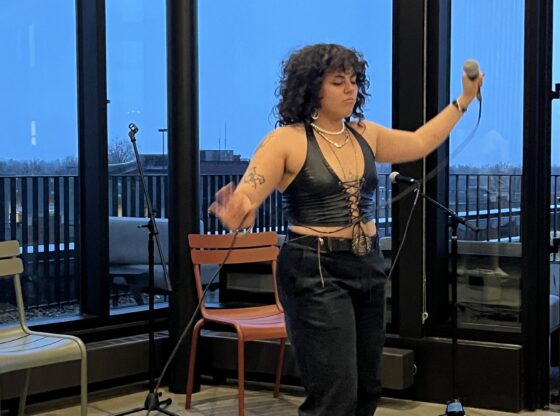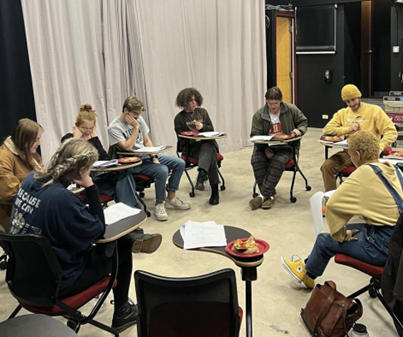Written by acclaimed “Room” author Emma Donoghue, the newly released “Frog Music” proves just as interesting in subject as her previous novel, while telling a vastly different story. The book follows Blanche Beunon, a burlesque dancer from France caught up in a murder and kidnapping in the wake of a smallpox wave. The majority of the characters of “Frog Music” were actual historical figures from 1876 San Francisco, all surrounding the clouded mystery of Beunon and a still-unsolved murder case. Donoghue, drawing from both her innovation and the history of the period, weaves a complex tale of passion, anger and regret.
A dramatic death opens the novel—Beunon’s friend, Jenny Bonnet, is shot while the two are singing together in a hotel room. “Frog Music” then goes back several weeks to the first meeting of the friends. Donoghue writes of two time periods: The time before Bonnet’s death and the time after. As the readers are dragged into the story of Beunon, they discover the malicious characters of Arthur Deneve, Beunon’s beau, and Ernest Girard, Deneve’s loyal friend and servant. Yet the book begins to unfold almost like a detective novel; the closer Beunon gets to the truth, the more complex and surprising it is.
The title “Frog Music” works in several ways. “Frog” refers to both the racial slur for the French during the nineteenth century, as well as serves as an homage to Bonnet’s job as a frog-catcher, while the phrase “frog music” pays reference to the constant singing throughout the novel, usually in French.
Donoghue takes risks in her novel by including substantial songs and dialogue in a foreign language, but it works fantastically well to set the readers in a time period of vast cultural differences, when language differences were seen as interesting rather than threatening, when women worked their hardest to get what they wanted in a world that did not believe in their equality.
Beunon, who is born into a world of privilege, does not recognize the flaws of the system until her run-in with Bonnet, who has spent a large portion of her life being repeatedly jailed for wearing pants, a style of clothing considered unbecoming of a woman. Bonnet pushes Beunon to become the best person she can be, repeatedly questioning Beunon about the state of Beunon’s son, who has been hidden away on a farm. This slight push towards justice causes Beunon to begin standing up for herself, pursuing her son and eventually stepping out from underneath the shadow of her self-induced worthlessness.
The time period of “Frog Music” is fantastically chosen, a century in which modern readers can still understand and apply to their own lives. The immensely deep characters show their flaws and their strengths in stride, allowing the readers more than a glimpse into the lives of women forced to do some difficult things to survive. The true and unsolved murder of Bonnet works in favor of keeping the reader hooked; long after the book has been put down, his or her thoughts will turn to the futility of Bonnet’s death and the shock of its unsolvable nature.
In these past few years, it has become common to herald popular books while isolating the fantastic but difficult ones to the lower shelves. “Frog Music” not only emotionally pushes its characters, but also the reader. It provides a rich and vibrant history of a period sometimes forgotten—a time before the World Wars and after the Civil War. Any readers looking for an interesting ride uncommon to today’s novels would benefit from taking a gander at Donoghue’s latest work.











